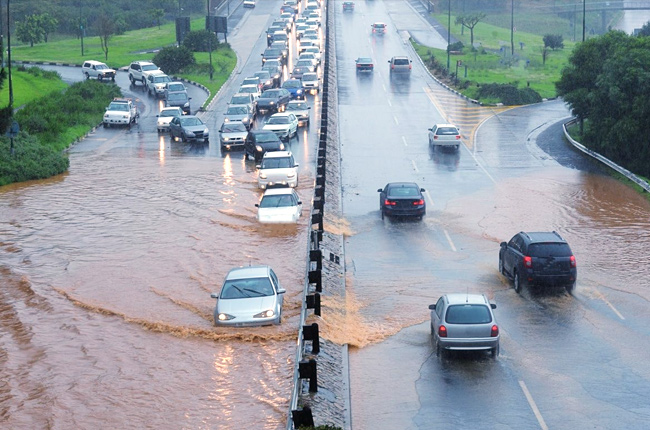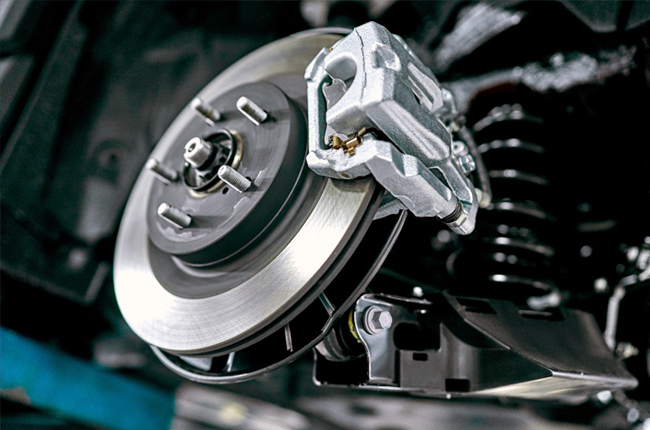
Updated: July 31, 2024
The Philippines as many already know is a tropical country, which means that we face weather extremes such as sudden bursts of heavy rain, tropical storms, and high heat regularly. In cases of heavy rainfall, many Filipino drivers will likely encounter a flooded street or two along their way home to work. This worsens if the heavy rain coincides with bumper-to-bumper traffic and public transportation woes.
With that in mind, and in case you find yourself driving in a downpour and the streets suddenly turn into outdoor pools, here are some safety tips for you to remember before taking the plunge.
Try to avoid flooded roads

No matter what you drive, an SUV or a subcompact hatch, it is wise to avoid passing through flooded roads. The reason for this is that you never know what lies underneath the water surface (open manholes, roadworks, deep potholes, etc.). With this, finding an alternate route is your best option, or better yet, staying in a safe place and waiting for the flood to subside.
If you want to press on, you can use your favorite navigation application, such as Waze or Google Maps, to find an alternate route around the flood. These applications may even help you identify other flooded streets and redirect you to avoid them, ensuring you reach your destination.
Remembering which roads are notorious for flooding will also be invaluable. Avoiding routes historically prone to flooding will help keep your car dry.
Driving through floods

If you have no other choice but to drive through a flood, you will first need to figure out the depth of the flood before you charge right on in. Whether you’re driving a sedan, van, or SUV, if the water level exceeds the wheel's center cap, DO NOT go for it and turn back or wait it out. Look at sidewalks, posts, or any surrounding structures that will help you gauge the flood’s depth or watch another vehicle go through.
If you deem that the water is low enough, put the vehicle in 1st gear (or low gear if it’s an automatic transmission) and maintain a steady speed of around five to 10 km/h. Make sure there is enough distance between your vehicle and the one ahead, and do not shift gears.
If the engine stalls, do not restart it. Get out of the car and push it to safety if possible to prevent further damage to your engine.
Dry the brakes

After going through flood water, you should dry the brakes by gently stepping on the pedal while driving slowly before you get up to normal speed. Wet brakes lack stopping power and can get you in trouble. Stepping on the brakes will also help remove a bit of the dirt and debris your rotors might have picked up while driving through the flood. In any case, it's still best to drive carefully after traveling through a flood.
Slow and alive is always better than early but dead.
Check, clean, and change

If you want to be on the safe side after traveling through a flood, then you can have your car checked by a mechanic or service center. If water seeped into the exhaust pipe or the engine, the fluids and some parts may have to be replaced. It would be advisable to have the whole car washed and even the underbody to prevent rusting. This could save you from shelling out thousands of pesos for major repairs later on.
Driving through flooded areas requires extra caution and serious consideration. Making the wrong choice could lead to costly vehicle repairs or a total loss. We hope these safety tips help you during a downpour.
If you’re looking to upgrade to a more flood-resistant ride like a pickup truck or SUV, you can browse numerous offerings available in the Philippine market on AutoDeal.com.ph. Find the best car for the best price with AutoDeal.com.ph.
Latest Features
-
How to prepare your car for the Holidays / Featured Article
Here are our handy tips on how to keep you on the road and stress free this holiday season.
-
An all-electric future: The Porsche Macan Electric / Featured Article
Porsche’s Macan goes all-electric; it’s a new beast with an electrified heart, yet unmistakably Porsche in performance and spirit.
-
Which Kia should I buy? / Featured Article
We’re here to help you decide which Kia vehicle is best for you, whether it’s a sedan, crossover, or minivan.
Popular Articles
-
Electric Vehicles in the Philippines for under P1 million
Jerome Tresvalles · Aug 19, 2025
-
Top 3 Cars For Every Lifestyle—What Cars Are Right For You? | Behind a Desk
Caco Tirona · Apr 24, 2024
-
5 Tips to Maximize Fuel Efficiency
Jerome Tresvalles · Sep 09, 2024
-
Five driving habits that are draining your fuel tank
Jerome Tresvalles · Jun 24, 2025
-
Can engine braking harm your engine?
Jerome Tresvalles · Sep 11, 2025
-
Do electric cars even need maintenance?
Jerome Tresvalles · Oct 23, 2024
-
Best vehicles for an active outdoor lifestyle
Shaynah Miranda · Jul 25, 2024
-
How to drive different types of vehicle transmissions
May 23, 2024
-
5 easy ways to keep your car interior clean
Allysa Mae Zulueta · Nov 15, 2021
-
How to survive Metro Manila traffic
Earl Lee · Aug 16, 2022




